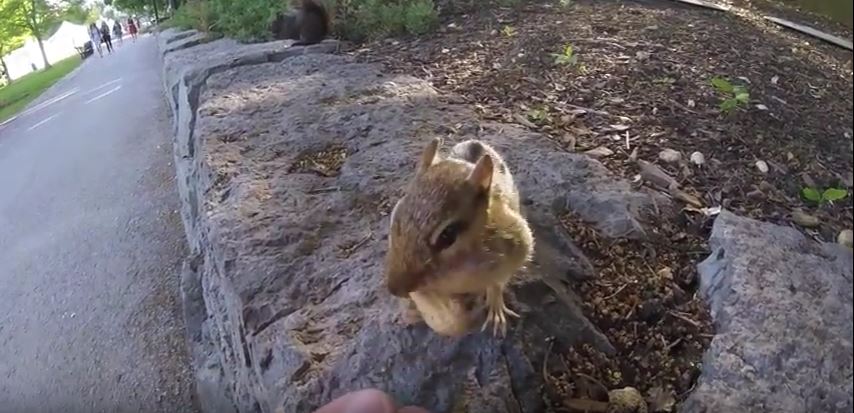About Chipmunks: Appearance, biology, life cycle, habitat, diet, behavior

Chipmunks are rodents that are easily identified by their stripes. They have pudgy cheeks, bushy tails, and glossy eyes. They belong to the scuiradae family and can be found in different parts of the world, but are most common in Mexico, Canada, the U.S. and Asia. There are more than 25 known species, and these have been seen in different environments, including the Alpine grasslands and areas that have desert-like features. They do vary in color; while some are reddish brown, others are more grayish. It all depends on the genum and family.
The chipmunks are small in size. In fact, they are the smallest animals that are found in the squirrel family. The biggest chipmunk is the eastern type that can grow up to 11-inches and average a weight of 125 grams. However, the average chipmunk is anything between 4-7 inches, and averages a weight of 28g-142g. Their tail can be as long as 13cm in some species, and they are known to live an average of 2-3 years. Generally, these rodents do not store fats but do gnaw on their food when hibernating in winter. It is during autumn that they are seen all over the place stockpiling food. It’s because of this fact that chipmunks are seen to be quite unique amongst the rodents.
These rodents are omnivorous and are not picky about what they eat. They like to eat mushrooms, berries, seeds, nuts, and berries. Furthermore, their other delicacies are baby birds, eggs, frogs, insects, and grains. They do eat buds and vegetables too. Just like the other rodents, chipmunks will have their young ones birthed live after a gestation period of 30 days. They can give birth one or two times in a period of 12 months. The pups are hairless and are fed and brought up by parents for about 2 months. Thereafter, they become independent and start gathering food.
These rodents are known to be active during the spring, summer, and fall before hibernating in winter. They make several sounds while communicating, and they might chirp to indicate territory, dominance or a threat. Additionally, they dig their burrow to an average of 3 feet deep.
Go back to the How to Get Rid of Chipmunks page or email us if you have any other questions about About Chipmunks: Appearance, biology, life cycle, habitat, diet, behavior
About Us
We are the Pest Education Network, a non-profit organization that focuses on wildlife and pest removal education. Our approach utilizes Integrated Pest Management, a strategy advocating prevention and humane methods.


